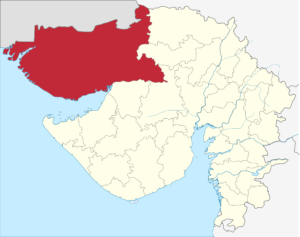Prehistoric site at Kachchh: Anthropology for UPSC
Why in news: Archaeologists have found one of India’s oldest stone-age sites that gives a new dimension to the complex story of human migration out of Africa, in the Kachchh region of Gujarat Located at Sandhav in the Naira Valley, 15 km from the shoreline,
About: 
- It is a Paleolithic site with an antiquity of 114,000 years
- Significance: It provides new insight on the expansion of modern humans into south Asia following their dispersal from the African continent.
- There are two main models for human migration from Africa to India. These are:
- Early men and women used a coastal highway 60 thousand years ago to disperse
- Multiple inland routes of dispersal between 128,000-71,000 years ago.
- The stone age tools found at Sandhav fits with the older, inland route models rather than the young coastal route.
- A range of evidence from across Asia suggests human populations began expanding out of Africa by 120,000 years ago, reaching China before 80,000 years ago, and Australia before 65,000 thousand years ago. The site at Sandhav fits with this wider evidence
- Contributors: Jimbob Blinkhorn, lead author of study from the Royal Holloway University of London and his colleagues from Maharaja Sayajirao University, Baroda, and the Max Planck Institute for the Science of Human History, Germany
- The study: They undertook survey work across Kachchh in the past to look for evidence that might support coastal dispersal models – but found nothing that matches with the predictions. Subsequently, they decided to revisit the sites for a re-look and stumbled upon the evidences from Sandhav. The study finds no evidence to support coastal dispersal, but better matches with the model of earlier dispersal through inland corridors.

- Interesting findings:
- The discovery of what could be the earliest signs of “hafting practices” – a way of making a tool with multiple components such as a metal knife with a wooden handle, or a stone tip attached to a wooden spear.
- Stone tools recovered: A distinctive tanged point that may have been used as the tip for a spear or attached to a handle and used as a knife. Such tools are found among the oldest Middle Palaeolithic tool kits across India, which have now been attributed to modern human populations.
- Why people might have chosen Sandhav as a place to live: Evidence suggest that Sandhav might have had strong monsoon regime and plants might have thrived with higher levels of summer rainfall, unlike the arid landscapes of Kachchh at present. This might have helped humans expand into the region.

Q. There is a global debate around human dispersal from Africa. Examine the different models of human migration in prehistoric times in the context of recent archaeological find from Kachchh region of India.
Q. Prehistoric site in western India
For more case study and articles related to anthropology: Click here
For UPSC anthropology preparations: click here
For UPSC anthropology videos: Click here











